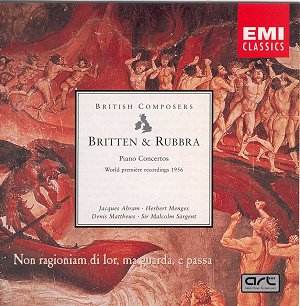 Composer: Richard Strauss
Composer: Richard Strauss
Works: Der Rosenkavalier
Performers: Elizabeth Schwarzkopf (Feldmarschallin), Otto Edelmann (Ochs), Christa Ludwig (Octavian), Eberhard Wächter (Faninal), Teresa Stich-Randall (Sophie), Ljuba Welitsch (Marianne), Paul Klein (Valzacchi), Kerstin Meyer (Annina), Nicolai Gedda (Italian tenor), Philharmonia Chorus, Children’s Chorus from Loughton High School and Bancroft’s School, Philharmonia Orchestra/Herbert von Karajan
Recording: Recorded in Kingsway Hall, London, 10-15, 17-22.12.1956
Label: EMI CLASSICS CMS 5 67605 2 [3 CDs, 70.08, 59.48, 61.38] mid-price re-issue
Richard Strauss’s Der Rosenkavalier occupies a unique place in the operatic canon as a love letter to the past, a nostalgic reflection on the complexities of love and time. Premiered in 1911, it encapsulates the essence of a bygone Vienna, a city imbued with elegance and cultural sophistication. This 1956 recording under Herbert von Karajan is not merely a documentation of the score but a vibrant evocation of Strauss’s rich musical language, rendered by an ensemble of artists who brought their own historical context to the performance.
Karajan’s interpretation is a study in contrasts, juxtaposing the grandeur of Strauss’s orchestration with a nuanced exploration of character and time. Elizabeth Schwarzkopf’s portrayal of the Feldmarschallin is particularly striking; her interpretation of the pivotal soliloquy in Act 1 is infused with a sense of tragic beauty that captures the fleeting nature of youth and love. Schwarzkopf’s semi-whispered phrases, punctuated by Karajan’s intentional pauses, create a palpable tension that invites the listener into an intimate space of reflection. In this moment, the music holds its breath, a masterstroke of interpretive choice that, while diverging from the more straightforward approach of Erich Kleiber’s earlier recording, reveals a profound understanding of the character’s emotional landscape.
The supporting cast is equally compelling, especially Christa Ludwig as Octavian and Teresa Stich-Randall as Sophie. Ludwig’s rich timbre and expressive phrasing provide a counterbalance to Schwarzkopf’s delicate rendering, while Stich-Randall’s ethereal high notes display an otherworldly quality that is both alluring and evocative. Their duet in Act 2, where burgeoning love is articulated through Strauss’s sumptuous melodic lines, showcases the delicate interplay between the voices, with Karajan’s orchestration enveloping them in a warm embrace.
However, while Karajan’s overall approach often prioritizes refinement and lyrical beauty, it occasionally sacrifices the buoyancy and spontaneity that can elevate Der Rosenkavalier to its full potential. Notably, in the bustling pantomime of Act 3, he adopts a brisk tempo that feels somewhat rushed compared to Kleiber’s more leisurely, yet expressive, handling of the score. This contrasts sharply with the earlier recording’s emphasis on allowing the comedic timing to breathe, lending a more dynamic feel to the narrative.
The sound quality of this EMI recording, while commendable for its time, presents a slightly recessed orchestral texture that can obscure the full impact of Strauss’s vibrant orchestration. The balance between voices and orchestra, though generally effective, occasionally tips in favor of the singers, which might detract from the listener’s appreciation of the lush orchestral tapestry that is integral to the work.
Karajan’s Der Rosenkavalier is, without doubt, a significant entry in the operatic discography, standing as one of the “Great Recordings of the Century.” While it may not supplant the historical authenticity and visceral immediacy of Kleiber’s interpretation, it offers a profoundly personal vision of the work that embraces its emotional depth and lyrical beauty. Both recordings contribute uniquely to the operatic landscape, making it essential for enthusiasts to explore the contrasting interpretations that enrich their understanding of Strauss’s masterpiece. The Karajan interpretation ultimately captivates through its elegance and depth, securing its place as a vital part of the operatic canon.



